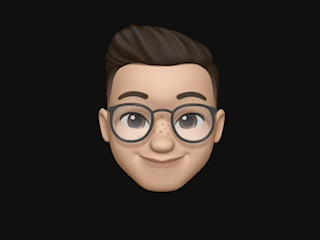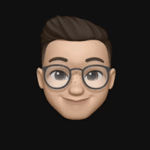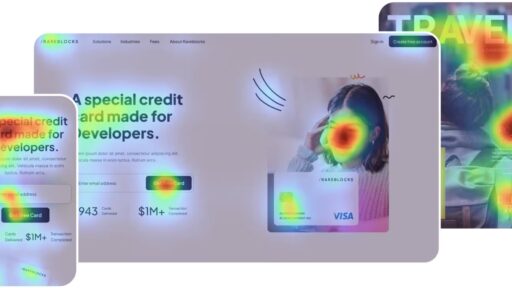Time to strip away the LinkedIn polish. We’re living through one of the most disruptive periods in design history. I’ve spent over a decade in this industry, working with everyone from Fortune 500 companies to scrappy startups. I’ve seen trends come and go. But this? This feels different.
So I did what any designer would do when facing existential career questions. I asked Claude Sonnet 4.5 to give it to me straight. No corporate fluff, no LinkedIn toxic positivity, just real talk about where UX design is heading through the rest of 2025 and into 2026.
The Job Market Reality Check (October 2025)
Let me hit you with some numbers that’ll make you uncomfortable. Job postings for UX designers dropped to roughly 70% of their 2021 levels. Meanwhile, UX research positions fell below 1,000 openings in early 2025. The only bright spot? Startup jobs are surging, but competition is absolutely brutal.
Translation: The golden age is over. However, that doesn’t mean the profession is dying. It’s evolving faster than most designers are adapting.
What’s Actually Happening Right Now
Companies are trimming the fat. Design departments that ballooned during the COVID tech boom are getting right-sized. Mass layoffs hit over 16,000 workers in February 2025 alone. Remote positions? Still stuck at around 1,000 openings with zero growth.
Here’s the kicker though. The World Economic Forum still lists UX product designers among the fastest-growing roles through 2030. So what gives?
The disconnect is timing. We’re in a market correction, not a market collapse. Companies over-hired during the pandemic. Interest rates killed cheap venture capital. Now everyone’s being more selective about who they bring on board.
AI Isn’t Replacing You (But It’s Changing Everything)
Everyone’s freaking out about AI taking their jobs. I get it. Tools like Galileo AI, Uizard, and whatever Figma just acquired last week are generating surprisingly decent designs. But here’s what Claude Sonnet 4.5 made crystal clear: AI is automating execution, not thinking.
Wireframes? Automated. Design systems? Mostly automated. Basic usability testing? Getting there. But strategy, problem framing, and understanding why humans do the weird things they do? That’s still firmly in the human designer’s territory.
The Skills That Matter in Late 2025
Stop obsessing over which design tool to learn next. Seriously. That’s not what’s going to keep you employed. Focus on these instead:
- Strategic thinking: Moving upstream to identify which problems actually need solving before anyone touches Figma
- Business acumen: Speaking the language of revenue, conversion rates, and metrics that executives actually care about
- AI collaboration: Understanding how to work alongside AI tools rather than competing with them
- Cross-functional leadership: Bridging gaps between product, engineering, and business stakeholders
- Research synthesis: Taking mountains of data and turning them into actionable insights humans can actually use
Additionally, about 39% of current design skills will be outdated or reshaped by 2030. That number was higher right after the pandemic, but we’re still racing to keep up.
The Devil’s Advocate Take
Maybe this correction is exactly what the industry needed. Hear me out. During the hiring frenzy, we saw an explosion of designers who learned just enough Figma to land a six-figure job. LinkedIn became a cesspool of regurgitated design tips with zero intellectual integrity. Everyone was calling themselves a “UX thought leader” after six months in the field.
This shake-up is forcing the industry to get serious again. Companies want designers who can prove ROI, not just make things look pretty. They need people who understand that design maturity isn’t about having a design system. It’s about embedding user-centered thinking into every business decision.
Perhaps that’s not such a bad thing.
2026 Predictions: What’s Actually Coming
Based on everything Claude Sonnet 4.5 analyzed, combined with market data and industry forecasts, here’s what 2026 is shaping up to look like:
Compensation Will Stabilize (Then Rise Selectively)
Average UX designer salaries are hovering around $106,000 to $124,000 in 2025, depending on location and experience. Projections for 2026 show modest increases of 3-7%, but with massive variance. Top performers with strategic skills and AI proficiency could see jumps of 15-20%. Entry-level positions? They’re getting squeezed hard.
Senior UX designers with business impact metrics will command premium salaries. Junior designers trying to break in will face the toughest competition we’ve seen in a decade.
Specialization Becomes Non-Negotiable
Generalist UX designers will struggle. The market is demanding specialists who can demonstrate deep expertise in specific areas. Voice UI design, AR/VR experiences, accessibility engineering, AI-driven personalization. Pick a lane and own it completely.
Consequently, designers who try to be good at everything will find themselves outcompeted by specialists who are exceptional at one thing.
Industries Outside Tech Will Explode
Digital transformation is hitting healthcare, finance, real estate, and traditional manufacturing hard. These industries desperately need UX talent but can’t compete with FAANG salaries. Smart designers will recognize the opportunity. Less competition, more impact, and genuine problems to solve that haven’t been picked over by 10,000 other designers.
Furthermore, you’ll actually get to see your work make a difference instead of optimizing button colors on yet another SaaS dashboard. The Future of Jobs Report highlights this digital transformation across non-tech sectors.
The Rise of UX 3.0
Forget UX 2.0. We’re entering what researchers are calling UX 3.0, where AI isn’t a feature but the foundation. Interfaces will be predictive and context-aware by default. They’ll adjust based on time of day, user behavior, location, and usage patterns without explicit user input.
Designers will work collaboratively with AI during ideation, iteration, and optimization. Your job won’t be designing screens anymore. It’ll be designing intelligent systems that learn and adapt.
Accessibility Becomes Table Stakes
This isn’t optional anymore. Color contrast, keyboard navigation, screen reader compatibility. These won’t be “nice extras” in 2026. They’ll be baseline requirements. Companies that ignore accessibility will face legal consequences and public backlash.
Moreover, cognitive accessibility for users with ADHD, autism, and dyslexia will move from afterthought to core consideration. Information architecture, notification systems, and mental load reduction become critical design factors.
What You Should Do Right Now
Stop waiting for the market to “get better.” It’s not going back to 2021. That ship sailed. Instead, position yourself for the market that’s actually coming. Much like how businesses are adapting AI strategies, designers need to embrace change now.
For Designers Currently Employed
Double down on proving business impact. Document how your design decisions affected key metrics. Revenue, retention, conversion rates, support ticket reduction. Build relationships with product managers and engineering leads. Make yourself indispensable by understanding the business deeply.
Start learning AI tools yesterday. Not just how to use them, but how to think about designing for and alongside them. Experiment with prompt engineering. Understand machine learning basics. Similar to Google’s approach to AI workplace transformation, you don’t need a computer science degree, but you need enough knowledge to have intelligent conversations about AI’s role in UX.
For Job Seekers
Your portfolio needs to tell business stories, not just show pretty pictures. Every case study should answer: What problem did this solve? What was the measurable impact? How did you validate your approach? What would you do differently?
Look beyond traditional tech companies. Expand your search to industries undergoing digital transformation. Healthcare tech, fintech, property tech, manufacturing software. The competition is lighter and the problems are more interesting. Think about how companies like Apple are betting on entirely new markets.
Network strategically. LinkedIn posts won’t cut it anymore. Attend local meetups. Contribute to open-source projects. Build genuine relationships with designers, researchers, and product managers. Your next job will likely come from someone who knows your work directly.
For Career Changers
Honestly? Consider whether this is the right time. Breaking into UX design in late 2025 and 2026 will be harder than any time in the past decade. You’re competing against experienced professionals who just got laid off from top companies.
That said, if you’re committed, focus on developing hard skills that AI can’t replicate. Research methodology, stakeholder management, strategic thinking, business analysis. Build a portfolio that demonstrates real problem-solving, not just completion of online courses.
The Bottom Line
Claude Sonnet 4.5’s analysis confirmed what many of us feel but don’t want to admit. The UX design profession is going through a painful but necessary transformation. The next 12-18 months will separate designers who adapt from those who don’t.
This isn’t the death of UX design. It’s the evolution into something more mature, more strategic, and ultimately more valuable. The designers who thrive will be those who embrace AI as a collaborator, develop deep business acumen, and focus on solving real problems rather than just pushing pixels. Just as we’ve seen with AI transforming search behavior, design is entering its own revolution.
The future belongs to designers who can think, not just execute. Master strategy, understand business, leverage AI, and prove impact with metrics. That’s the playbook for surviving 2025 and thriving in 2026.
Now stop reading and start adapting. The market doesn’t care about your feelings, but it rewards those who see change coming and position themselves accordingly.






